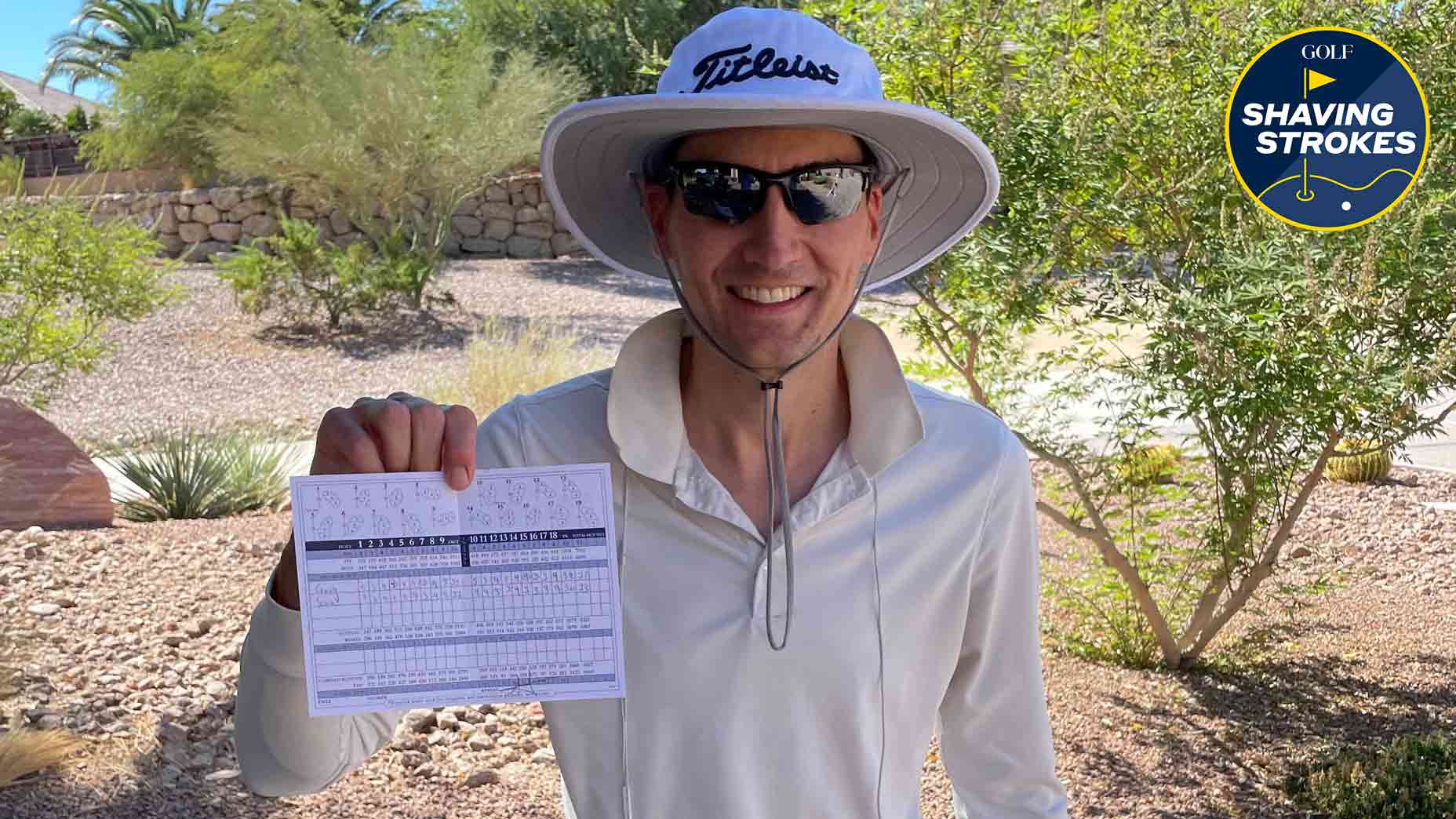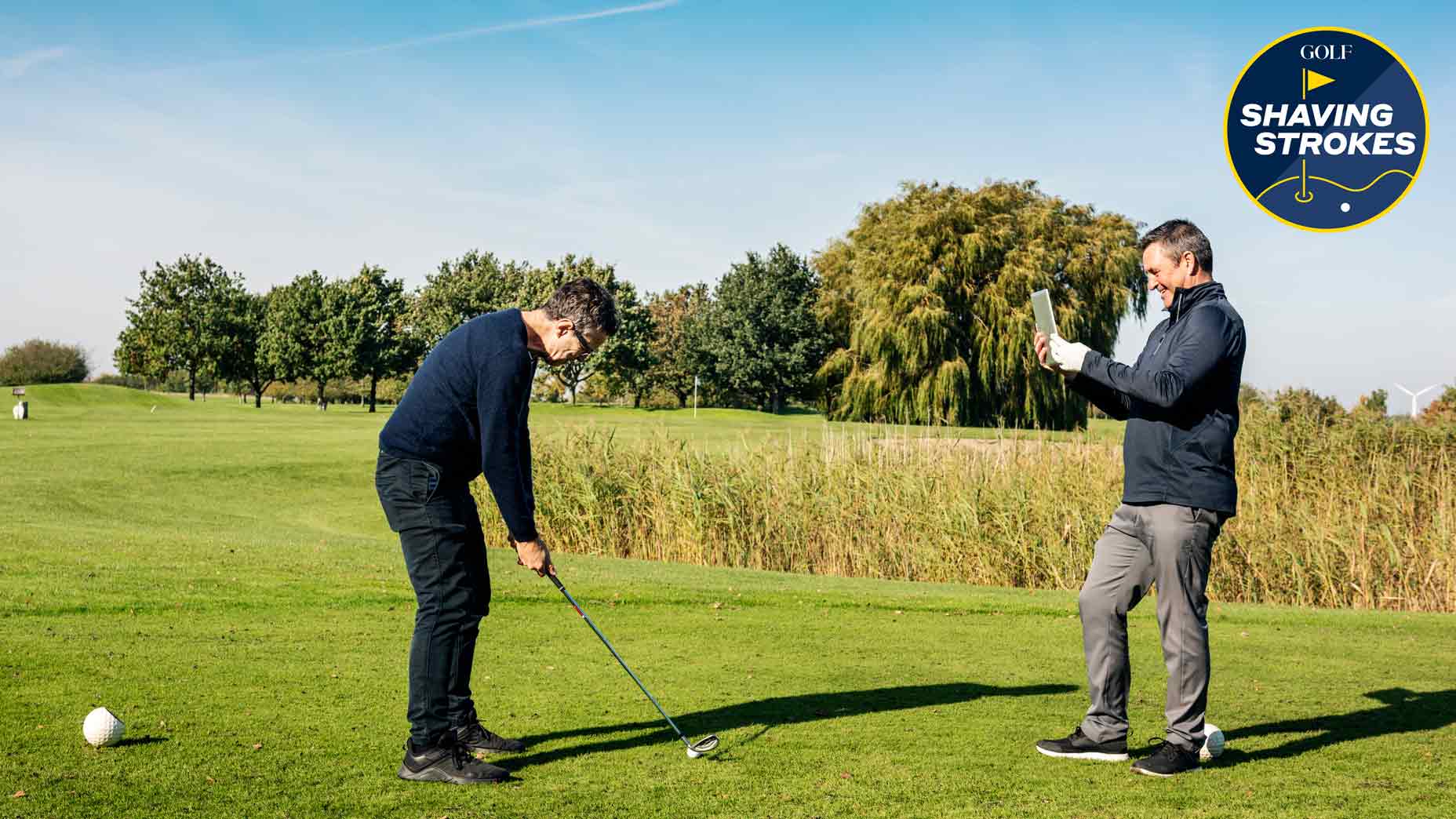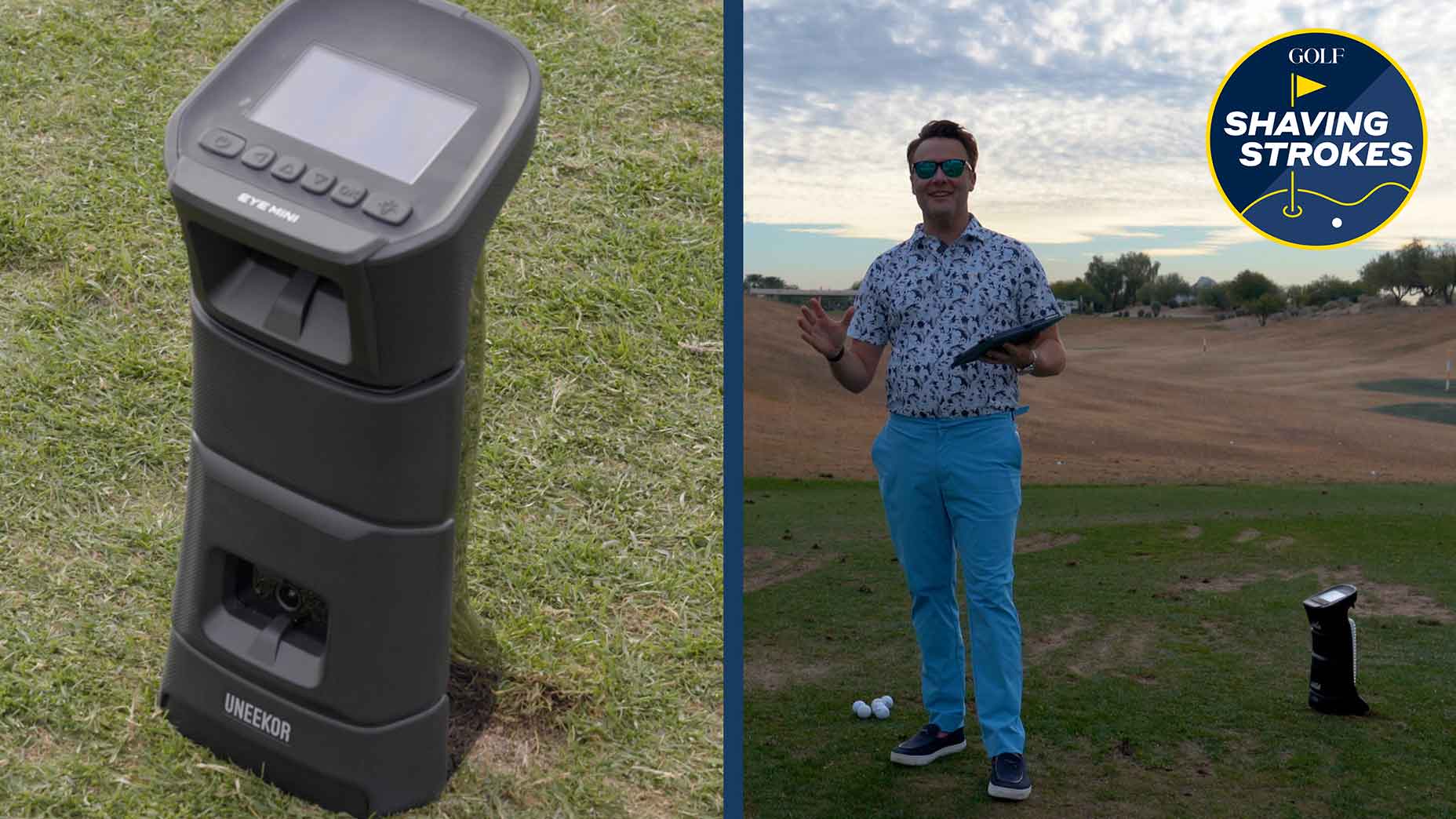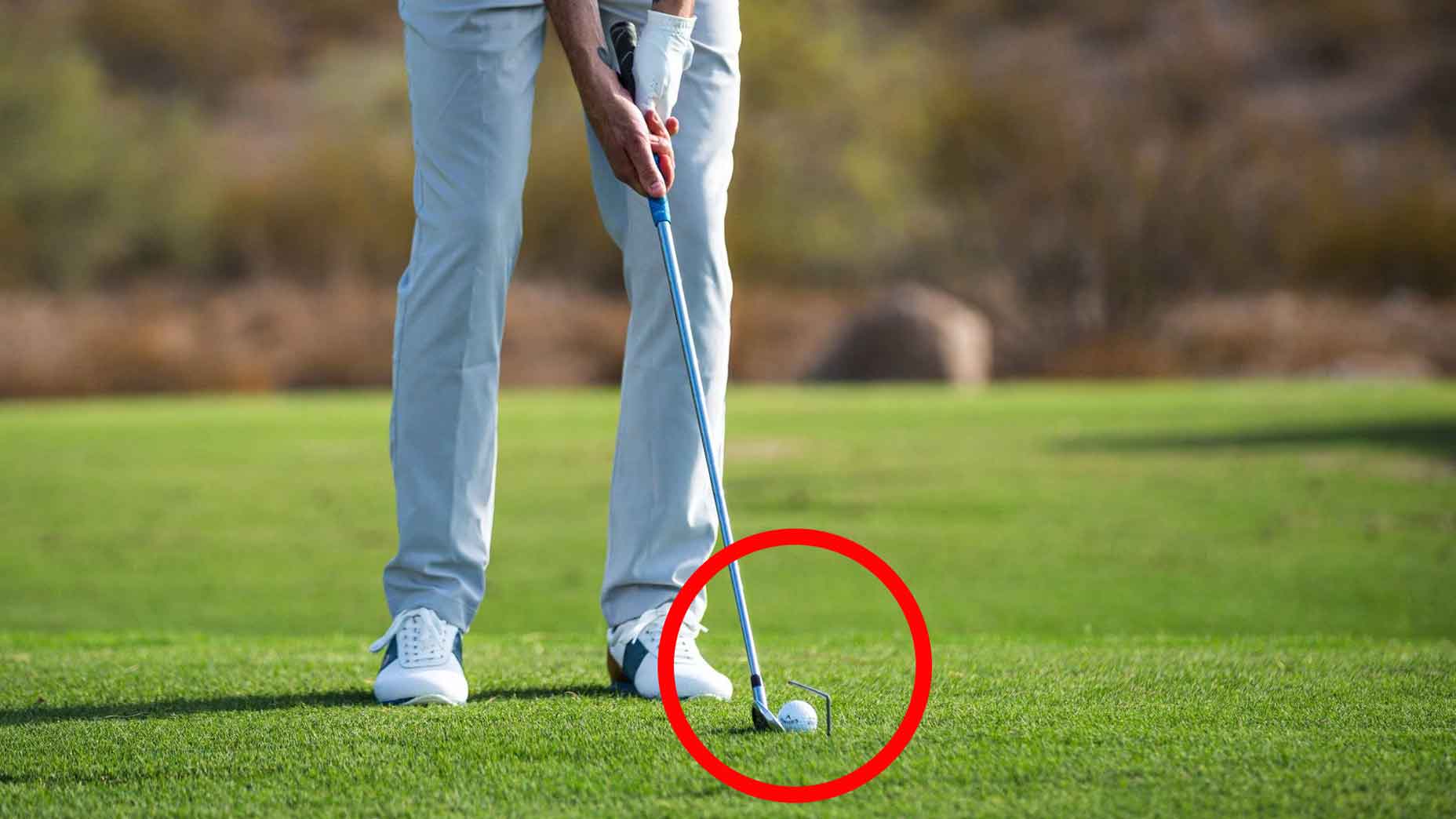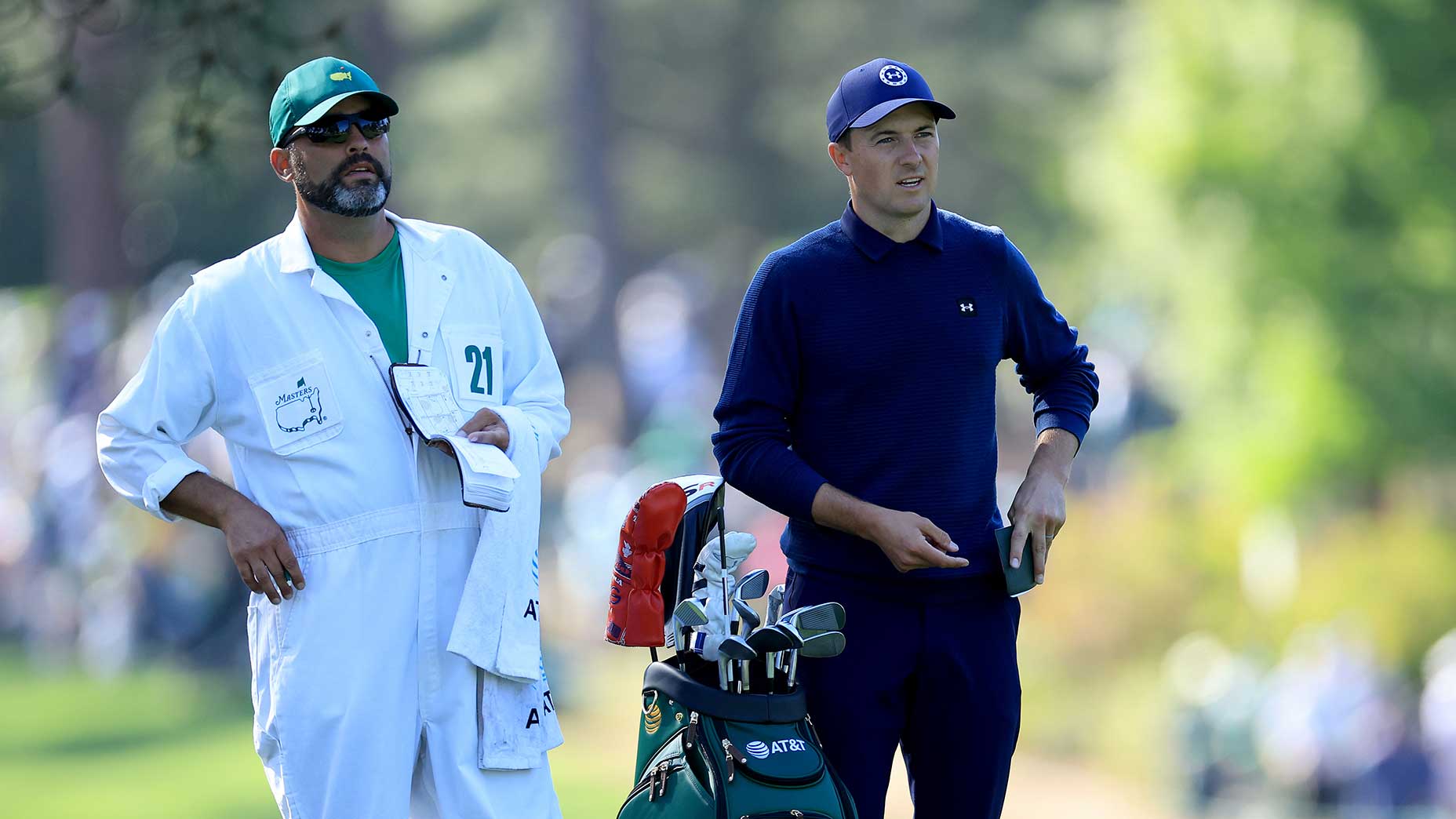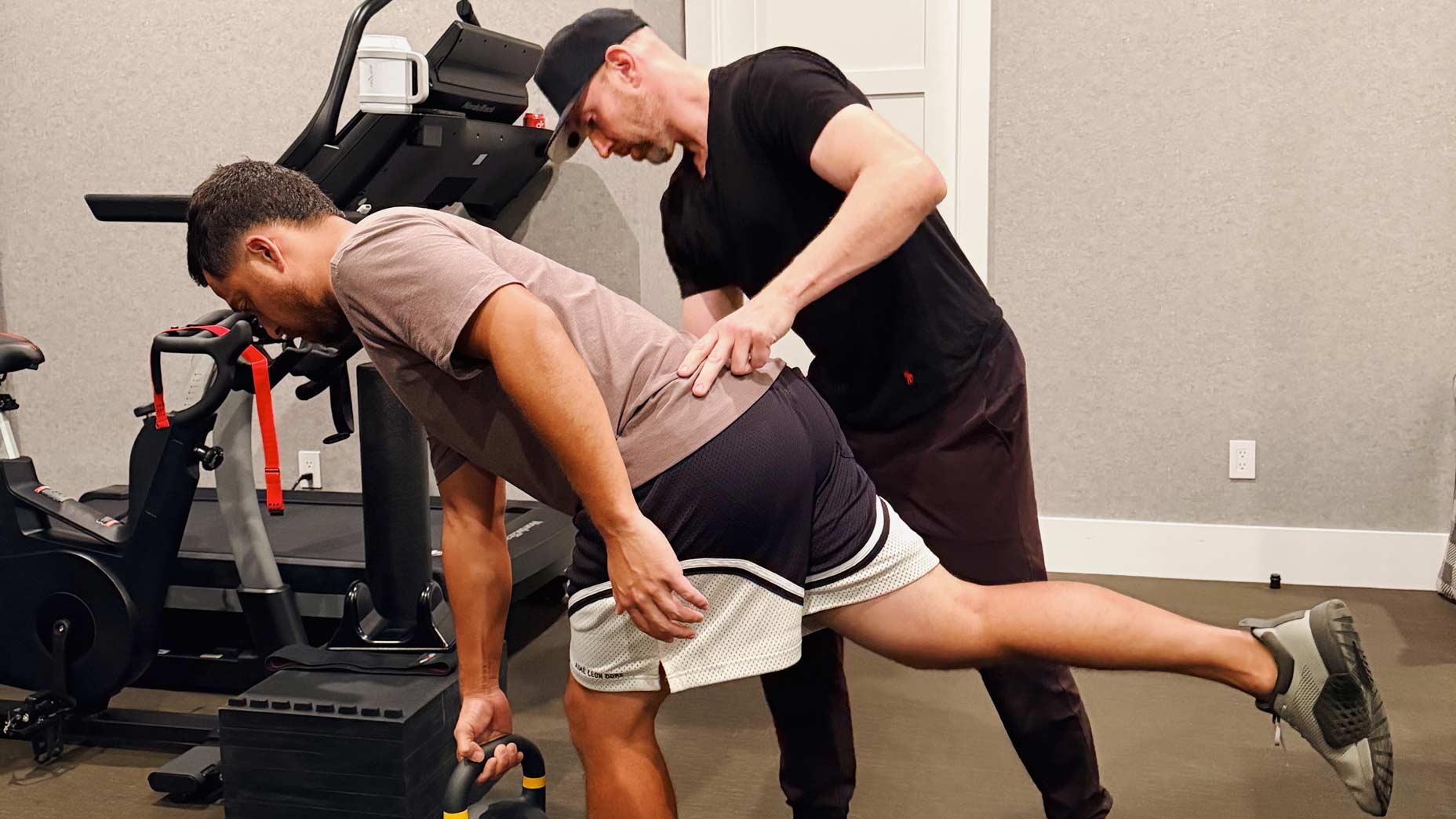Welcome to Shaving Strokes, a new GOLF.com series in which we’re sharing improvements, learnings and takeaways from amateur golfers just like you — including some of the speed bumps and challenges they faced along the way.
Going through a swing change is no easy task. Not only does it take dedication and trusting the process, but it also takes lots of practice. Like, extreme amounts of practice.
With the golf season yet to begin, the winter months are prime time for many amateurs to go through a swing change. We’ve all got big goals to hit this year, and assuming we all want to see our scores go lower, those goals sometimes require wholesale changes, too.
Many of us are familiar with the success pro players like Rickie Fowler have experienced following a swing change, but can that type of turnaround happen for amateurs as well?
In the case of today’s Shaving Strokes candidate — a former D1 tennis player named Craig — it sure did.
Craig didn’t start showing interest in playing golf until he was 35 years old. With a background in high-level competition, he had the sheer athleticism and drive to pick up the game quickly. But fast success can sometimes be a curse in golf, causing bad habits to form and an artificial ceiling to be placed on your ability.
Making a swing change? These are 4 things you need to knowBy: Tim Cooke, Top 100 Teacher , Nick Dimengo
Enter GOLF Teacher to Watch Matt Henderson.
According to Henderson, Craig had some wear and tear on his body from so many years of playing tennis. This limited him a bit physically.
“Tennis had taken a physical toll on his body, and the time and effort to stay in competitive shape simply wasn’t available after he and his wife had their second child,” Henderson said. “But he wanted golf to provide the competitive outlet [he missed from his tennis days], and Craig was dedicated to practice by himself in his spare time.”
And so the long process of establishing the right technique began, with Henderson working to help Craig acquire the necessary golf skills to perform his best.
“In the first six months, we worked on reinforcing a massive reverse pivot that was making it almost impossible to control the low point of his golf motion,” Henderson said. “So the ability to contact the ball was not present or consistently achievable.
“So after first working on his technique, we then introduced practice methods to work on his technical motion.”
How a launch monitor helped accelerate improvement
With clear technical direction, the next ingredient was practice time — since the only way Henderson believes players see actual improvement is through repetition.
“After hitting into a net for 30-45 minutes daily for one year, Craig’s scoring had improved to the upper 80s; but there were still elements missing,” Henderson said. “As a technology executive with a wife and two kids under age three, getting to the course was difficult. After research and his wife’s approval, he bought a launch monitor, and it immediately made a profound impact in his practice.”
Henderson says that adding a launch monitor to Craig’s practice routine instantly gave him the feedback he needed to improve.
4 important launch-monitor numbers that’ll *really* improve your gameBy: Nick Dimengo
Practice was no longer about just the result, it was about seeing exact numbers that could articulate what was happening with the ball, then adjusting the setup and swing to work on honing those numbers in.
Craig found that practice was more fun, and it was easier to practice for longer durations. No matter how focused he was on his goal, hitting balls into a net without any idea of what was happening wasn’t the most stimulating improvement plan.
By communicating with Henderson between practice sessions, reviewing video and launch numbers, and good old-fashioned practice, Henderson accelerated his improvement. When Craig went in for lessons, he understood the numbers coming out of Henderson’s launch monitor so the pair could talk more technically about the swing and translate that into training drills at home.
Breaking 80: The 4 things Henderson had Craig work on
According to Henderson, amateurs need to focus on strokes lost to par — a point of emphasis while working with Craig — if they want to start breaking 80.
“The average scratch golfer is making 2.3 birdies per round, and the average 15-handicap is making 0.5 birdies per round,” he adds. “That means that the difference is coming mainly from dropped shots.
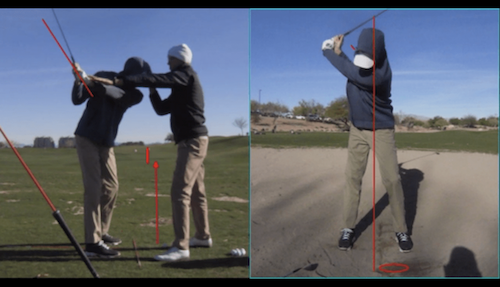
“The challenge with Craig was the same as most golfers,” Henderson said. “It’s not necessarily making more birdies, it’s really about eliminating the mistakes and dropping fewer strokes to par.
“Most strokes lost are the result of errant tee shots and misplaced approach shots,” he said. “Errant approach shots lead to difficult short game shots or longer first putts. Golf is really a proximity game, so the farther away you are from the hole, the more likely you are to add strokes.”
From committing Craig to the technical aspects of the swing to developing a strong approach for the mental and physical parts of the game, Henderson says the following four steps are how he was able to help Craig go from an ambitious golfer to breaking 80.
1. Functional and sustainable practice environment
Recognizing Craig’s limited practice time, we designed a practice environment tailored to his life. This approach maximized the effectiveness of Craig’s practice sessions, making the most of the time that he could dedicate to golf.
In order to find the consistency you want, your practice also needs to be consistent relative to how it fits in your life’s schedule. If you want to improve, invest in a sustainable time and place to get your work done.
2. Coaching communication between lessons
Regular communication between both coach and student outside of any lessons was crucial. This ongoing dialogue allowed for addressing challenges, clarifying doubts, and ensuring that Craig stayed on track with his improvement plan.
Even if the smallest questions or concerns linger, they can then snowball into potential disasters. So open discourse through the process is the way to go!
3. Skill acquisition vs. technique
While it’s important to recognize the importance of technique, we learned with Craig to prioritize developing practical skills, enabling him to adapt to various situations on the course rather than fixating on specific swing mechanics.
This helps with decision-making during rounds, which can lead to fewer opportunities for mistakes (and lower scores).
4. Learning to focus (mental/emotional/psychological tools)
Beyond the physical aspects, Craig dived into mental and emotional tools to enhance his focus. Adding performance tools gave Craig the strategies to manage emotions on the course, ensuring a growth mindset that contributed to improved performance.
Craig’s success showcases the significance of comprehensive coaching, and emphasizes communication, skill acquisition, mental tools, and a practical practice environment. By implementing these aspects, he’s been able to unlock his potential and consistently break 80.
Craig’s journey is far from complete, but he now has the tools to manage the highs and lows in his golf game. In mapping out your own journey, his progress is a good roadmap to help you improve as well.
